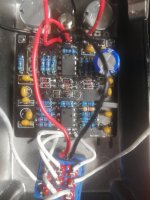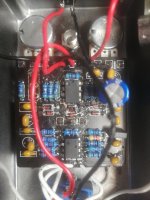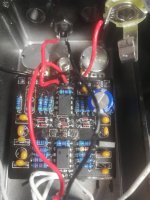I'm building the Dream Fuzz pedal and I'm having an issue where the pedal isn't producing a signal when the tone bypass is switched on. But when switched off, the signal is going through and everything else works fine.
I tried orienting the switch the other way, I made sure the switch is soldered well and I even tried using a different switch and nothing has worked thus far.
Any ideas what could be going on?
I tried orienting the switch the other way, I made sure the switch is soldered well and I even tried using a different switch and nothing has worked thus far.
Any ideas what could be going on?



